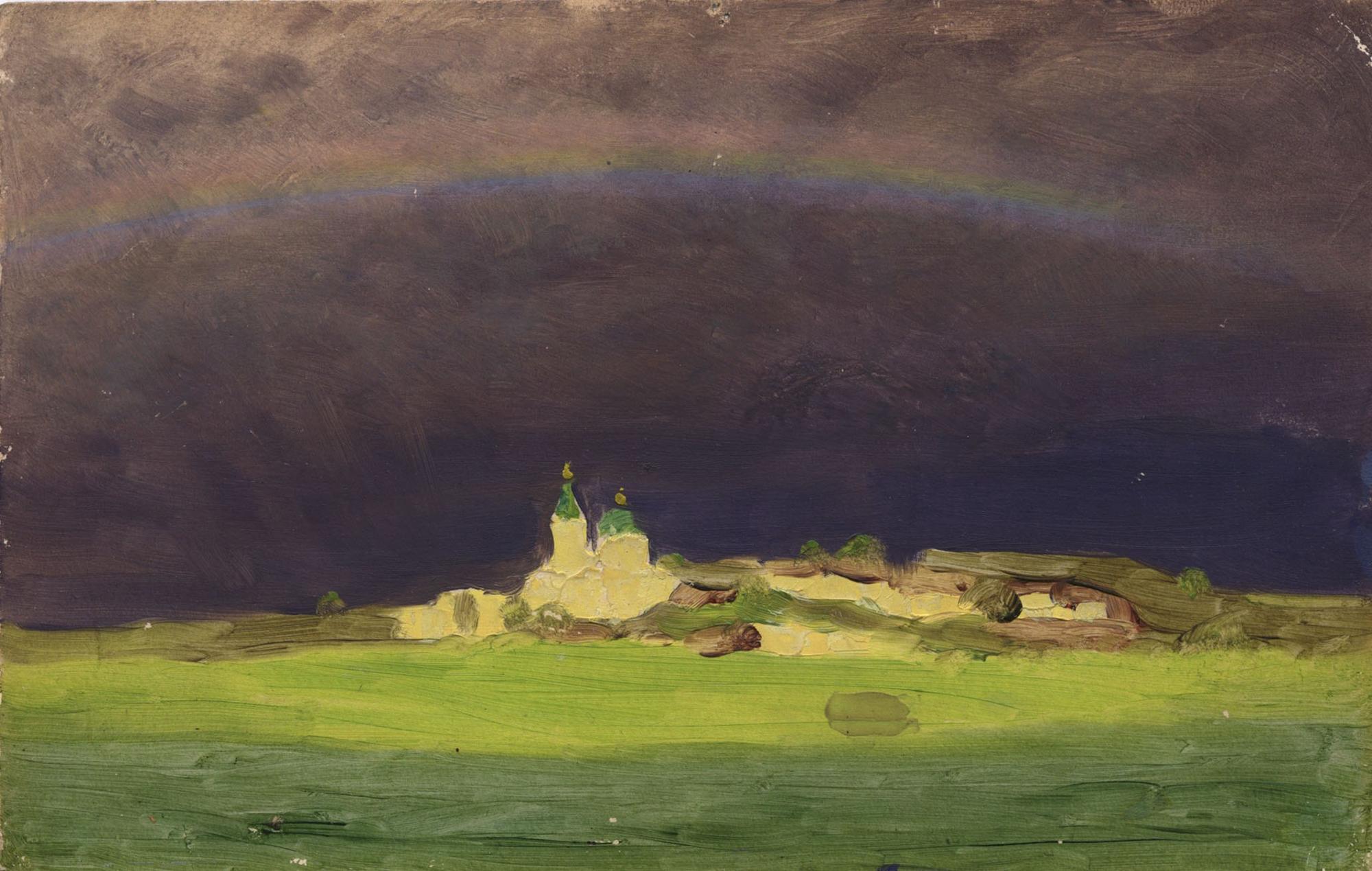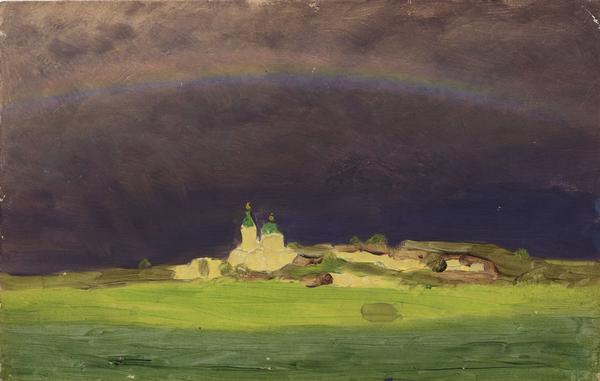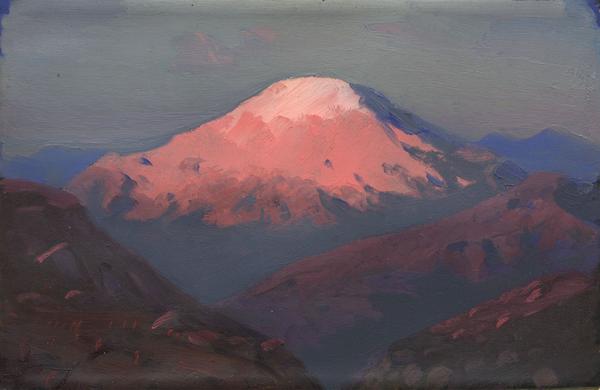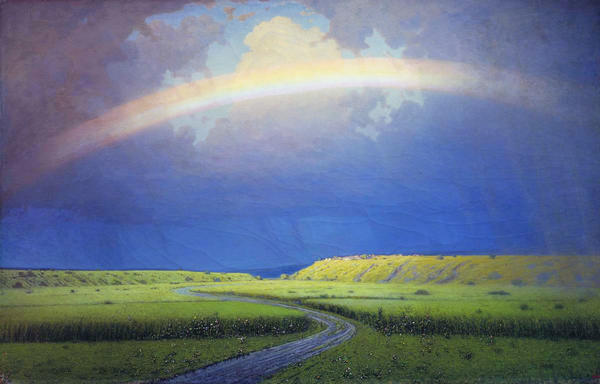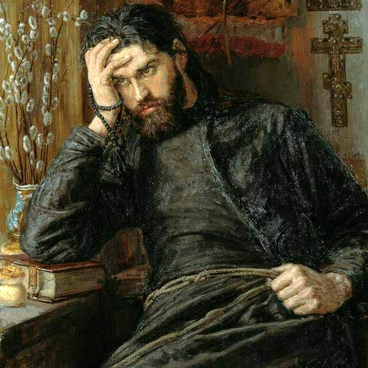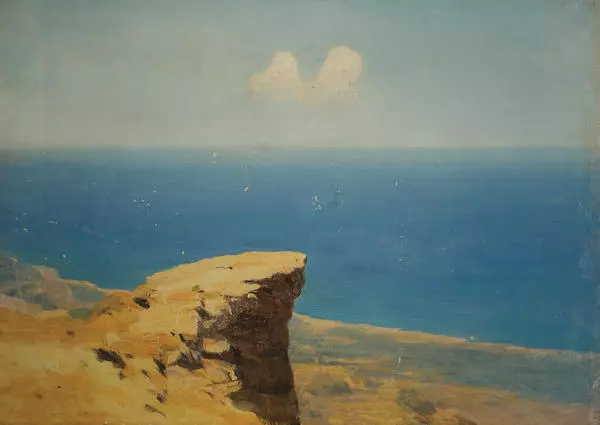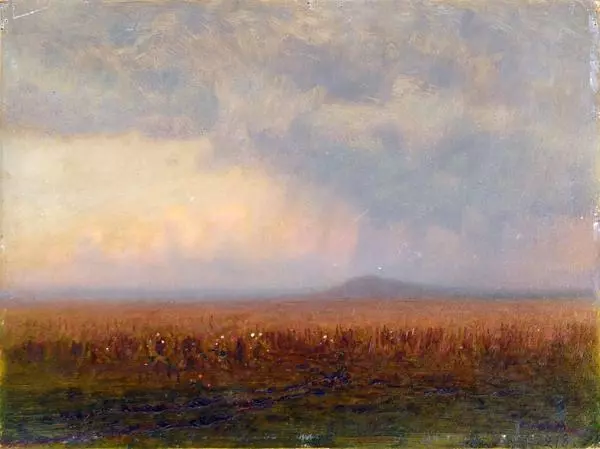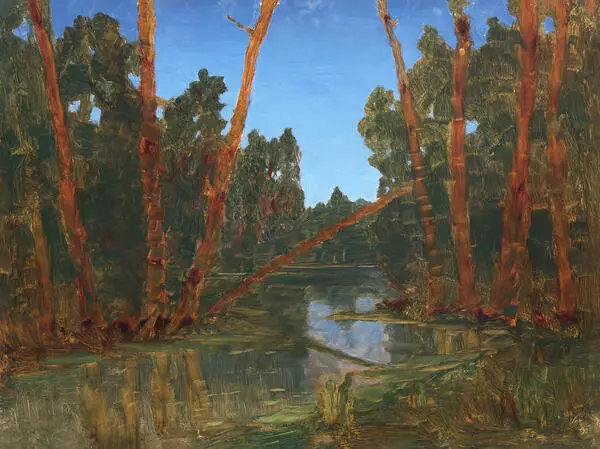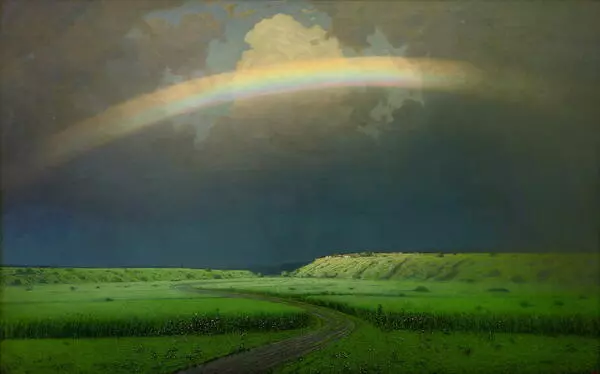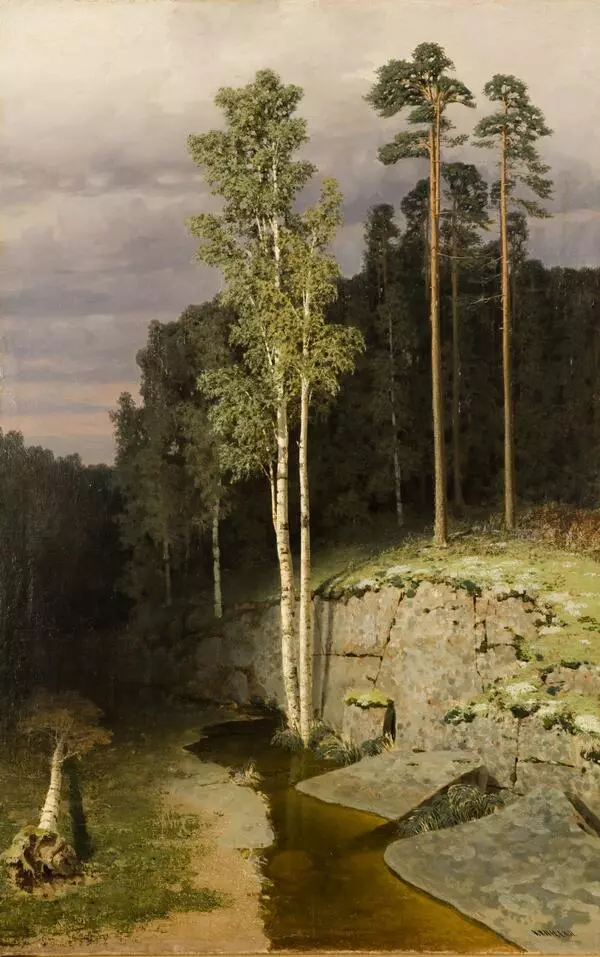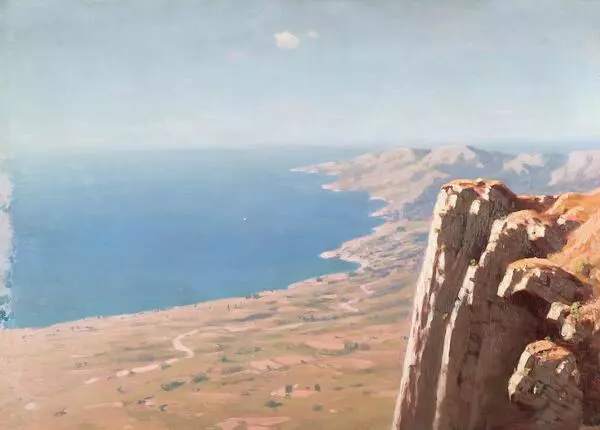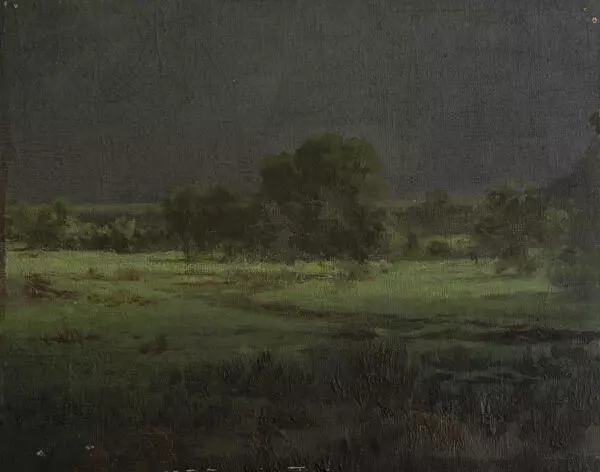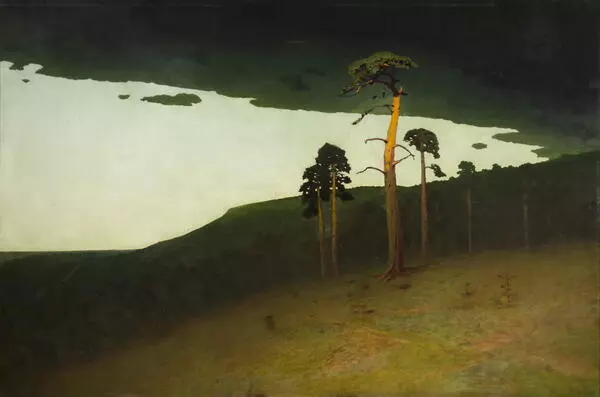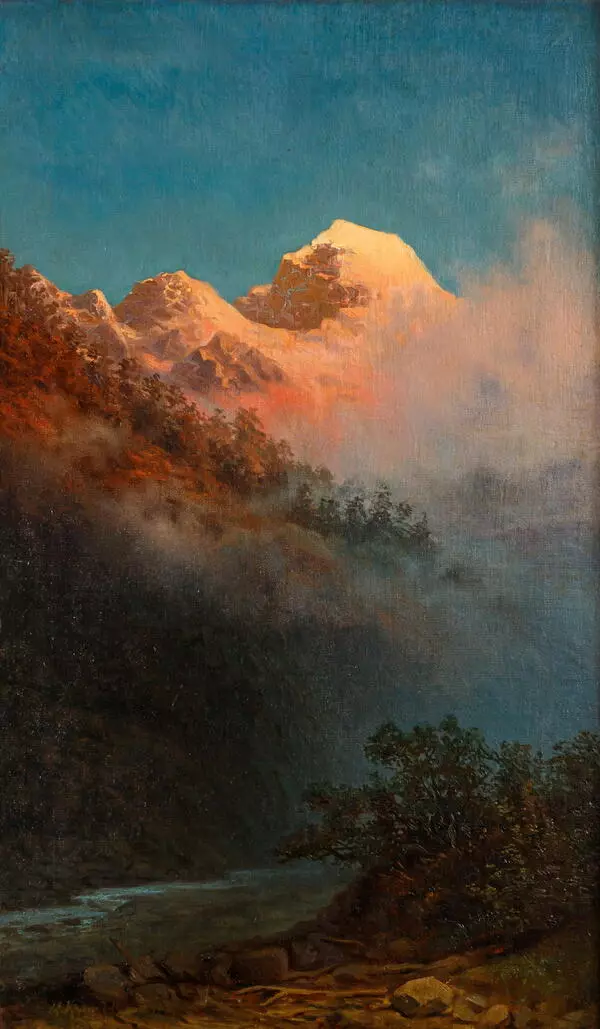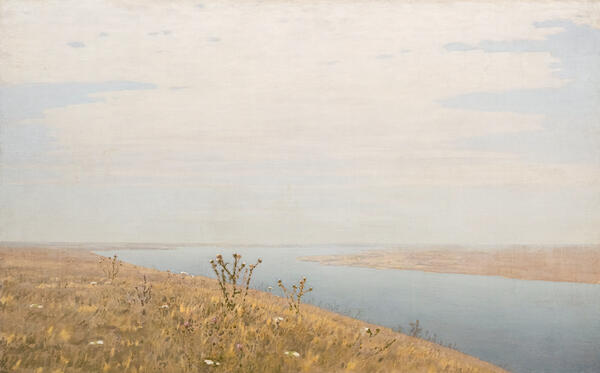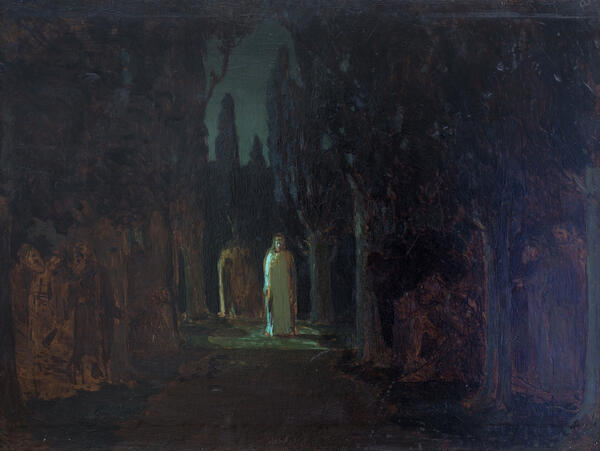Bluish black clouds still hang over the horizon, but a rainbow illuminates a slightly blurred rural landscape. The anxiety generated by the dark colors of the sky recedes before this bright unearthly radiance, giving hope for the end of the storm.
In the ninth chapter of Genesis, the rainbow is mentioned as a symbol of the covenant between God and the descendants of Noah: ‘Whenever I form clouds over the earth and [My] rainbow appears in the clouds, I will remember My covenant: water will never again become a flood to destroy every creature’.
Arkhip Kuindzhi is the famous Russian landscape painter of the second half of the 19th - early 20th centuries, artisan of light and contrasts. A serious passion for astronomy, the physics of color and light found its reflection in his painting. His spectacular, vibrant and dazzlingly clear paintings stunned the Russian audience.
Ilya Repin wrote about Arkhip Kuindzhi the following: ‘The illusion of light was his god, and there was no artist equal to him in achieving this miracle of painting’.
In 1914, four years after the artist’s death, Kuindzhi Society donated several of his works to Penza Art Gallery. Among them was “The Sea” - a small sketch, transmitting the immensity of the sea, imbued with air, light, and emitting radiance itself. Ivan Nikolaevich Kramskoy spoke of Arkhip Kuindzhi: “Looking at such paintings, I can become better, kinder, healthier…”
